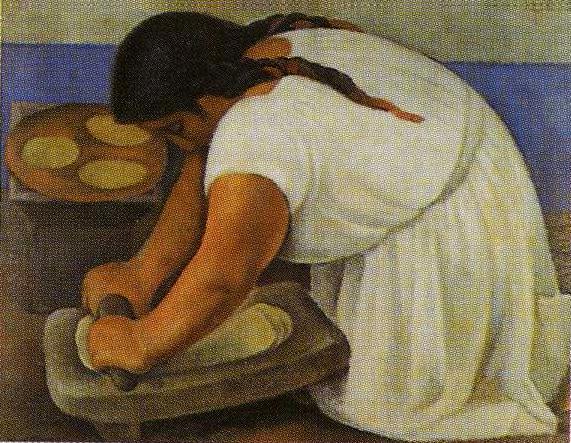gustavob
CHSTU
Position Blog
El Movimiento has been an ongoing struggle on achieving societal freedom and Mexican American empowerment since the 1940’s Mexican American Civil Rights Movement.1 Scholars have made the notion of saying El Movimiento whom elevated in the mid 1960’s, is an extension of the Mexican American Civil Rights. Numerous Chicanos and Chicanas whom belonged to well established organizations and attended prestigious universities have fueled El Movimiento. This powerful movement sparked all over the United States with great momentum due to the inequalities of Chicanos and Chicanas nationwide no matter of their socioeconomic standing. From inequalities in education, voting, and restoration of land grants, to farm workers rights and political rights, Chicanos/a have addressed these issues with the help of El Movimiento.1A
El Movimiento or in English formally known as the Chicano Movement, has sparked the interests of the entire Chicano communities in the United States to fight for equality. These communities have been oppressed and marginalized for over 500 years.2 This movement has been uprising since the mid 1800’s, the end of the U.S-Mexican War.2A The war was to blame because of the hundreds of thousands of Mexicans whom became United States citizens immediately following the war. The fact was the United States decided to move the U.S-Mexican border to where it currently stands today. This era ignited the discrimination to all whom were Mexican American. 2B
Chicanos/a were finally given the opportunity to stand to what enough was enough. They were tiered of being looked as third-class citizen who do not have the standards of belonging on the north side of the U.S-Mexican border.3 In a social context, the Chicano movement wanted to address the negative stereotypes mass media and American perception created for Mexicans.4 El Movimiento was also active on focusing its efforts on daily discrimination of Chicanos/a private and public organizations in which used these organizations to keep in contact with every one who was part of the movement. They served as the backbone of the Chicano Movement in keeping everyone in the community informed.4A One in particular was the League of United Latin American Citizens. This organization has been active since 1929.5 The most leading organization in the Chicano community is the Mexican American Legal Defense and Educational Fund (MALDEF) Mexican Americans formed these organizations to shield the wellbeing of them selves and others from prejudice. The main leaders whom helped not only these organizations but the entire Chicano/a nation came from New Mexico, Texas, Illinois, and mainly California like Reis Lopez Tijerina, Dr. Hector Garcia, and the well known figures of Cesar Chavez and Dolores Huerta, the leaders of the farm workers in California. 6
Cesar Chavez and the National Farm Workers Association (NFWA) organized one of the well-known rallies in the Chicano Movement.7 The entire grape-picker work force of California rallied and marched to the state capital of Sacramento demanding higher wages and urged all Americans to boycott table grapes. This lasted five years, which lead to national awareness.8 This can be seen as the initiation of mass media covering El Movimiento live and on the move. Students viewed the Chicano Movement as an opportunity to address the lack of their heritage in the classrooms. They wanted to establish self-identity in the classroom as they have outside. Movimiento Estudiantil Chicano de Aztlán known as MEchA was formed to help the lack of teaching in the classroom of the Chicano/a history.9 This may be one of the factors of why CHSTU 101 is on the curriculum currently at the University of Washington.
The Chicano Movement has been a historical event that will never be forgotten in U.S history. I stand by this because of the overwhelming population of second-generation Mexicans who were born in the United States and consider them selves Chicano/a or Mexican American. They them selves are being identified by this powerful event that might of happened years before their time. This is the factor of how powerful this movement really was for the Mexican American community. This is one true accomplishment the Chicano Movement bestowed on the Chicano/a youth. They are proud on who they are and what they consider to really be their ethnical background. El Movimiento is jumping to the future in which may never be forgotten.
Work Cited Page
1. Edward J. Escobar, "The Dialectics of Repression: The Los Angeles Police Department and the Chicano Movement, 1968-1971" (The Journal of American History, 1993 Vol. 79, No. 4, pp. 1483-1514).
1A. Lecture Sanchez, Antonio
2. Power Point, Sanchez, Antonio
2A. Ignacio M. García, Chicanismo: The Forging of a Militant Ethos Among Mexican Americans (Tucson: University of Arizona Press, 1997).
2B. Mario T. García, Mexican Americans: Leadership, Ideology, & Identity, 1930-1960 (New Haven: Yale University Press, 1989).
3. George Mariscal, Brown-Eyed Children of the Sun: Lessons from the Chicano Movement, 1965-1975 (Albuquerque: University of New Mexico Press, 2005)
4. Carlos Muñoz, Jr., Youth, Identity, Power: The Chicano Movement (New York: Verso, 1989). ISBN 0-86091-913-7
4A. Juan Gómez Quiñones, Chicano Politics: Reality & Promise, 1940-1990 (Albuquerque: University of New Mexico Press, 1990). ISBN 0-8263-1213-6
5. F. Arturo Rosales, Chicano! The History of the Mexican American Civil Rights Movement (Houston: Arte Publico Press, 1996). ISBN 1-55885-201-8
6. "People & Events: Cesar Chavez (1927-1993)". American Experience, RFK. Public Broadcasting System. 2004-07-01. http://www.pbs.org/wgbh/amex/rfk/peopleevents/p_chavez.html. Retrieved on 2009-03-31.
7. F. Arturo Rosales, Testimonio: A Documentary History of the Mexican-American Struggle for Civil Rights (Houston: Arte Publico Press, 2000).
8. database of portraits in the National Portrait gallery - César Chávez. Accessed Mar. 20, 2009.
9. Carlos Muñoz, Jr., Youth, Identity, Power: The Chicano Movement (New York: Verso, 1989). ISBN 0-86091-913-7
-xx-Museo-Nacional-de-Arte.jpg)

































No comments:
Post a Comment